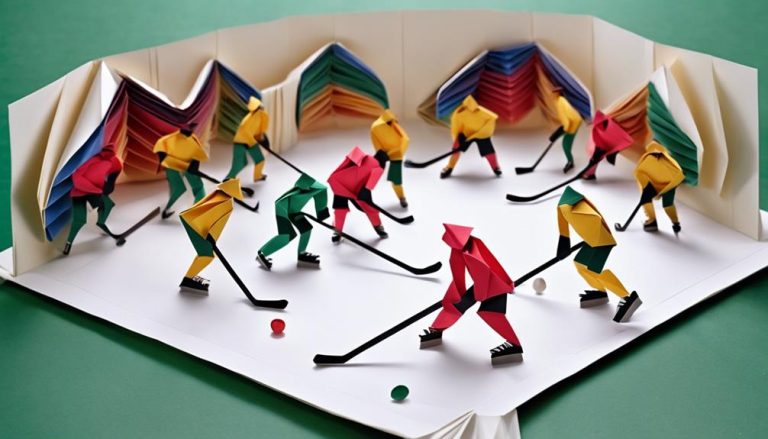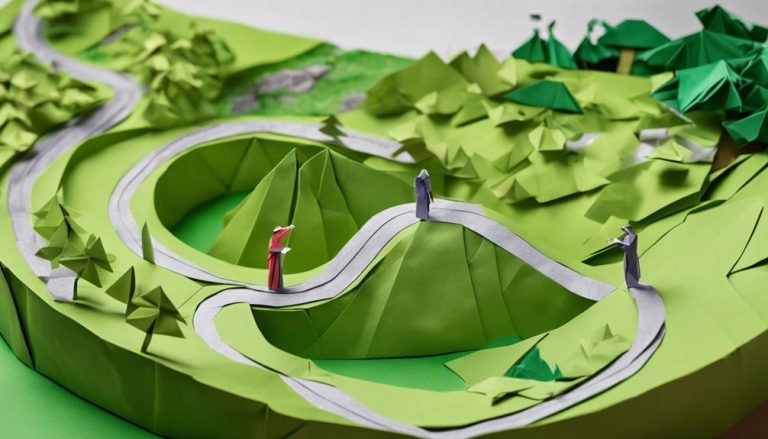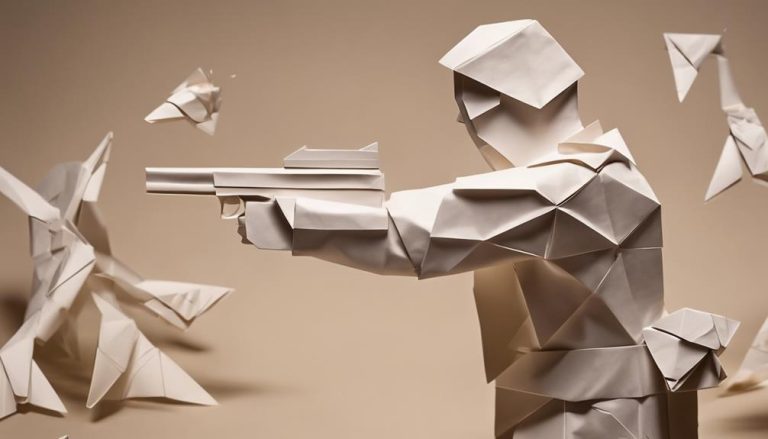General Rules of Naginatajutsu Martial Art
When practicing Naginatajutsu, you must adhere to the general rules that govern this ancient martial art. From the history that shapes its essence to the code of conduct that guides practitioners, each aspect plays a vital role in honing your skills and character. As you begin to understand the significance of etiquette, safety, basic techniques, weapon handling, sparring protocols, and the code of conduct, you will realize the depth of knowledge embedded within this disciplined art form.
History of Naginatajutsu
Naginatajutsu, a traditional Japanese martial art, boasts a rich history dating back to ancient times. The evolution of techniques within Naginatajutsu is a fascinating journey that reflects not only changes in combat strategies but also shifts in cultural practices. Originally developed during the Heian period (794-1185), the naginata, a weapon similar to a polearm with a curved blade, was utilized by foot soldiers and samurai warriors alike. Over time, the techniques for implementing the naginata evolved, incorporating both offensive and defensive maneuvers that suited various combat scenarios.
The cultural importance of Naginatajutsu cannot be overstated. In feudal Japan, it was a martial art that primarily women practiced as a way for them to protect themselves and their families in the absence of male protectors. The techniques taught in Naginatajutsu were not only effective in combat but also instilled values of discipline, perseverance, and respect. The graceful yet powerful movements associated with the art form are a sign of the blend of physical prowess and mental fortitude required to master it.
Throughout history, Naginatajutsu has adapted to changing circumstances, from its origins in battlefield combat to its modern-day practice as a form of physical exercise and self-defense. The evolution of techniques and the cultural importance embedded within Naginatajutsu continue to captivate practitioners and enthusiasts alike, preserving a rich tradition that transcends generations.
Etiquette in Training
In the practice of Naginatajutsu, observing proper etiquette in training sessions is fundamental for fostering a respectful and disciplined environment conducive to learning and growth. Traditional customs play a significant role in shaping the conduct within the dojo, emphasizing values such as respect, humility, and discipline. When entering the training space, it is customary to bow as a sign of reverence for the art, the instructors, and fellow practitioners. This simple gesture sets the tone for the session, promoting a mindset of mindfulness and focused practice.
During training, adhering to dojo etiquette is essential. This includes following the instructions of the sensei without hesitation, maintaining a spirit of cooperation with training partners, and showing appreciation for feedback and corrections. In Naginatajutsu, the hierarchical structure is upheld, with senior practitioners guiding and supporting those with less experience. By respecting this hierarchy and acknowledging the expertise of senior members, a harmonious atmosphere is cultivated where learning can thrive.
Moreover, the dojo is a place where egos are set aside, and individuals come together to improve collectively. It is essential to approach training with an open mind, ready to receive guidance and instruction. By embracing the traditional customs and etiquette of Naginatajutsu, practitioners not only show respect for the art but also demonstrate a commitment to personal growth and mastery.
Safety Measures
Implementing stringent safety measures is paramount in guaranteeing the well-being of all participants during Naginatajutsu training sessions. To guarantee a safe training environment and prevent injuries, proper protective gear must be worn at all times. This includes headgear, body armor, gloves, and shin guards. The use of protective gear not only reduces the risk of injuries but also instills confidence in practitioners, allowing them to focus on refining their skills without fear of harm.
In addition to wearing protective gear, it is essential to maintain a safe and controlled training environment. Practitioners should be mindful of their surroundings, ensuring there is enough space to move freely without any obstacles that may cause accidents. Clear communication between training partners is essential to avoid misunderstandings that could lead to injuries.
Emergency procedures should also be established and communicated to all participants before training sessions begin. Everyone should be aware of what to do in case of an injury or emergency situation. Designating individuals responsible for overseeing safety during training can help ensure that prompt action is taken if needed.
| Protective Gear | Training Environment |
|---|---|
| Headgear | Clear of obstacles |
| Body armor | Spacious environment |
| Gloves | Good lighting |
| Shin guards | Proper ventilation |
| Emergency procedures |
Basic Techniques
To advance your skills in Naginatajutsu, mastering the fundamental Basic Techniques is key to developing a strong foundation in this martial art. These techniques encompass a combination of precise footwork drills and effective striking techniques that are essential for your growth in Naginatajutsu. Here are three critical components to focus on:
- Footwork Drills: Proper footwork is the cornerstone of Naginatajutsu. Practice shifting your weight smoothly between stances, maintaining balance and agility. Engage in exercises that enhance your ability to move swiftly and fluidly, enabling you to position yourself strategically during combat. By honing your footwork skills, you will be able to control the pace of the fight and dictate the distance between you and your opponent.
- Striking Techniques: Mastering the art of striking is vital in Naginatajutsu. Learn the proper form for executing powerful strikes with your naginata. Focus on developing speed, precision, and timing in your attacks. Practice different types of strikes, such as thrusts, slashes, and sweeps, to effectively engage opponents at various angles. Understanding the mechanics of each strike and knowing when to employ them can give you a significant advantage in combat scenarios.
- Combining Footwork and Striking: Integrating footwork drills with striking techniques is vital for seamless execution in Naginatajutsu. Coordinate your movements with your strikes to maximize the effectiveness of your attacks. By synchronizing your footwork with your strikes, you can optimize your reach, power, and defensive capabilities, creating a well-rounded approach to combat. Focus on fluid shifts between footwork patterns and striking sequences to enhance your overall performance in Naginatajutsu.
Weapon Handling
Efficiently mastering the techniques of weapon handling in Naginatajutsu is imperative for developing proficiency in wielding the naginata. Grip techniques play a vital role in controlling the weapon effectively. The way you hold the naginata can significantly impact your strikes and overall performance. It is essential to practice different grip styles to find the one that suits you best. Experiment with variations until you discover the grip that provides stability and allows for fluid movements.
Precision strikes are another crucial aspect of weapon handling in Naginatajutsu. Striking with accuracy and control can make the difference between a successful attack and leaving yourself vulnerable. Focus on targeting specific points on your opponent or practice striking at various angles to improve your precision. Remember that each strike should be deliberate and calculated to maximize its impact.
—
| Grip Techniques | Description | Benefits |
|---|---|---|
| Shinobi Grip | Grip where the hands are closer together | Enhanced control |
| Jodan Grip | Grip with one hand close to the blade end | Increased reach |
| Koryu Grip | Traditional grip with both hands in the middle | Balanced maneuverability |
—
Sparring Protocols
Utilizing established sparring protocols is essential in Naginatajutsu to guarantee safe and structured training sessions for practitioners. When engaging in sparring, it is important to follow specific guidelines to guarantee the safety of all participants and maintain the integrity of the practice. Here are three key aspects to take into account when it comes to sparring techniques and competition rules:
- Controlled Strikes: During sparring sessions, practitioners must focus on executing controlled strikes. This involves being mindful of the strength and speed behind each movement to prevent unnecessary injuries. Emphasizing control not only promotes safety but also hones precision in technique.
- Respecting Boundaries: Understanding and respecting the boundaries set during sparring is crucial. Practitioners should be aware of the designated sparring area and avoid excessive contact outside of it. Respecting these boundaries fosters discipline and ensures a fair and orderly sparring environment.
- Adhering to Competition Rules: Whether in a formal competition or a friendly sparring match, it is important to adhere to the established rules. These rules govern various aspects of the sparring session, including permissible techniques, scoring criteria, and conduct expectations. By following the competition rules diligently, practitioners showcase sportsmanship and uphold the principles of Naginatajutsu.
Code of Conduct
As you progress in your study of Naginatajutsu, maintaining respectful interactions and adhering to ethical behavior expectations are vital aspects of the Code of Conduct. These points emphasize the importance of showing courtesy and consideration towards your fellow practitioners, fostering a harmonious training environment. By upholding these principles, you not only honor the tradition of Naginatajutsu but also cultivate a sense of discipline and integrity in your practice.
Respectful Interactions
In Naginatajutsu martial art, adhering to respectful interactions forms the foundation of the code of conduct.
- Vital Respect: Practitioners are expected to treat each other with dignity and honor, fostering a sense of equality and camaraderie within the training space.
- Communication Skills: Effective communication is essential in avoiding misunderstandings and conflicts. Clear and vital dialogue guarantees smooth interactions between practitioners.
- Listening: Active listening is essential in demonstrating respect towards training partners and instructors. By truly hearing and understanding each other, practitioners can build trust and strengthen their relationships within the Naginatajutsu community.
Ethical Behavior Expectations
Moving from the foundation of respectful interactions, adhering to ethical behavior expectations in Naginatajutsu martial art involves upholding a strict code of conduct. The honor code within Naginatajutsu emphasizes integrity, honesty, and respect towards oneself, instructors, peers, and opponents. Upholding moral values such as humility, perseverance, and self-discipline is essential in maintaining the ethical standards of the art. Demonstrating sportsmanship, both in victory and defeat, is a key aspect of the code of conduct, fostering a spirit of camaraderie and mutual respect among practitioners. Additionally, showing reverence for the traditions and history of Naginatajutsu is paramount to honoring the legacy of the martial art. By embodying these ethical principles, practitioners not only improve their skills but also cultivate a sense of personal growth and character development.
Frequently Asked Questions
What Are the Benefits of Practicing Naginatajutsu for Physical and Mental Health?
Practicing naginatajutsu can enhance your physical strength, agility, and coordination. It also sharpens mental focus, discipline, and resilience. Through this martial art, you’ll experience improved physical and mental well-being, empowering you holistically.
Are There Any Specific Clothing or Gear Requirements for Training in Naginatajutsu?
When training in naginatajutsu, you’ll need specific clothing like a keikogi and hakama for traditional attire. Gear requirements include the naginata weapon itself, along with protective equipment like a men, kote, and tare for safety during practice.
How Long Does It Typically Take to Progress Through the Different Levels or Ranks in Naginatajutsu?
In naginatajutsu, progressing through levels can vary based on dedication and talent. Typically, advancing from beginner to mastery involves years of training. As you master techniques and refine skills, the intensity of training increases.
Are There Any Age or Physical Fitness Limitations for Learning Naginatajutsu?
Age restrictions or physical requirements in learning naginatajutsu aren’t strict. Most schools welcome all ages and fitness levels. Beginners start with basic movements to build strength and technique gradually. Consistent practice is key to improvement.
Can Naginatajutsu Techniques Be Adapted for Self-Defense Purposes in Real-Life Situations?
When considering self-defense in real-life situations, adapting Naginatajutsu techniques can be effective. Understanding how to apply these techniques practically can enhance your ability to defend yourself in various scenarios.






